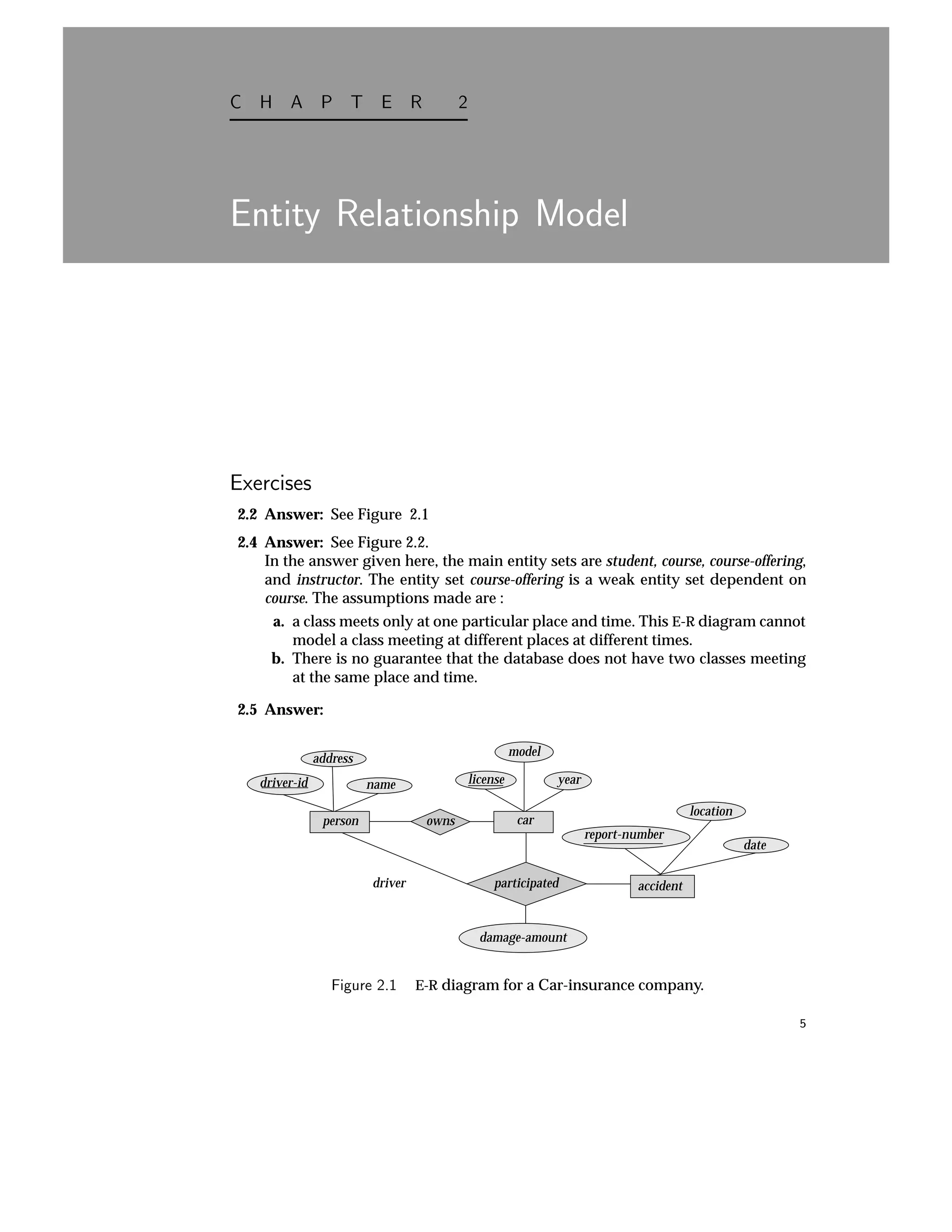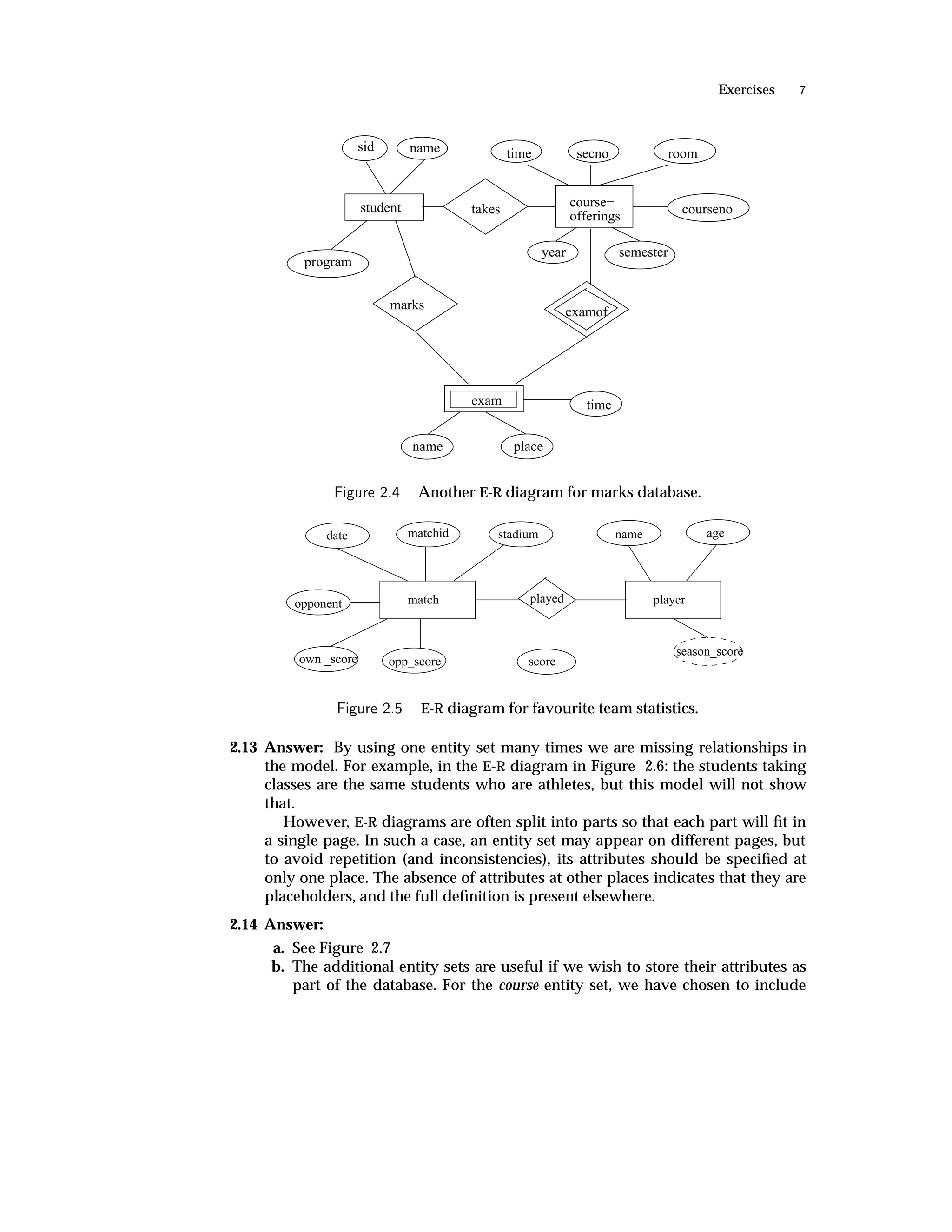This document discusses exercises related to entity relationship modeling. It includes ER diagrams for examples like a university registration system, car insurance claims, and sports team statistics. It also provides answers to various questions about identifying optimal ER diagrams, handling weak entities, and merging databases from two different banks. The key topics covered are ER modeling, identifying relationships, handling attributes and weak entities, and resolving conflicts when merging related databases.








